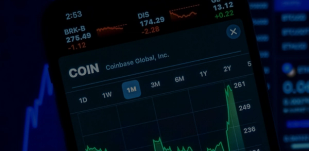What is a Single Euro Payments Area (SEPA) Transfer?
When attempting to make cost-effective and efficient transfers you must wrestle with a complex set of variables: cross-border fees, foreign exchange rates, currency conversions, and local regulations. But there is another – less documented – variable that can impact the cost of your payments when transferring money within Europe: whether to make a transfer via an international wire or the Single Euro Payments Area (SEPA).
So, what is a SEPA bank transfer and how does it work?
What is SEPA (Single Euro Payments Area)?
The Single Euro Payments Area (SEPA) is a European Union (EU) derived payment initiative designed to harmonise the way cashless payments are transacted across Europe.
The SEPA project aims to create "an integrated retail payments market which is competitive and innovative, for all payments in euro" (European Central Bank, 2006).
Essentially SEPA bank transfers are for anyone living or working within the EU and wider Europe.
This single system for domestic and cross-border transfers makes it easy for anyone to charge an account in one country directly for services provided in another - including, paying by Direct Debit, credit transfer, debit and credit card payments and even withdrawing money from cash machines.
This is particularly useful if you’re working or studying in another SEPA country: you can use an existing account in your own country to get paid and pay your bills.
What is a SEPA transfer?
SEPA facilitates cheaper, safer, and faster international payments and transparent pricing using centralised payment schemes and standards.
Under the provisions of SEPA, banks should not charge more for cross-border payments than domestic ones, no matter what currency they are made in. They must, therefore, be processed under the same terms - making receival fees inapplicable.
Standard SEPA transfers – which can only be made on the days banks operate – typically take one business day to be processed and settled. However, it’s possible to make a payment to a beneficiary on the same day provided it is made before the cut-off time, which is usually set for late morning. The cut-off time for a payment to be made the next working day is usually set for late afternoon/early evening.
It is also worth noting that SEPA is limited to euro transfers only.
Which countries are included in SEPA?
SEPA consists of 36 members, including the 27 EU member states, the four member states of the European Free Trade Association (EFTA) – Iceland, Liechtenstein, Norway, and Switzerland – and the United Kingdom (UK). The European Payments Council (EPC) approved the UK’s ongoing participation in SEPA post-Brexit.
A list of all SEPA countries:
- Austria
- Belgium
- Bulgaria
- Croatia
- Cyprus
- Czech Republic
- Denmark
- Estonia
- Finland
- France
- Germany
- Gibraltar
- Greece
- Hungary
- Iceland
- Ireland
- Italy
- Latvia
- Lichtenstein
- Lithuania
- Luxembourg
- Malta
- Monaco
- Netherlands
- Norway
- Poland
- Portugal
- Romania
- San Marino
- Slovakia
- Slovenia
- Spain
- Sweden
- Switzerland
- UK
How does a SEPA payment work?
There are three different types of SEPA payments. Here, we detail how they work, and what types of payments they are best suited for.
SEPA Credit Transfer (SCT)
First introduced in 2008 by the EPC, SEPA credit transfers are typically used for one-off transfers. SEPA registered payment service providers move payments from one account to another within the SEPA network.
The transaction uses the IBAN (International Bank Account Number) and sometimes the BIC (Business Identifier Code) to ensure that funds are moved into the correct accounts. Payments are usually received within one business day.
SEPA Instant Credit Transfer (SCT Inst)
The EPC launched the SEPA Instant Credit Transfer scheme in 2017. This processes and settles payments in at least ten seconds – similar to domestic payments – and is unaffected by national holidays and weekends.
SEPA Direct Debit
SEPA direct debit transfers are best suited to recurring payments such as subscription services, rent and utility bills. They are different to SEPA credit transfers in one fundamental way: the recipient requests the money transfer from the sender.
Make international payments with Clear Currency
The SEPA project allows individuals and businesses within those countries to experience the same ease and convenience when making euro transactions across Europe as they can when making a payment within their home country.
Clear Currency is an international payments specialist with a wealth of market knowledge and experience. We can help to make your cross-border transactions as seamless as a local payment by helping you to utilise SEPA. We’re dedicated to removing any barriers to making seamless cross-border transfers, paving the way for frictionless, cost-effective international payments.
Open your free Clear Currency account today for quick, secure and cost-effective international currency transfers.
Related Articles
How to Mitigate Foreign Exchange Risk
Currency risk can have a significant effect on the efficiency and profitability of any international business. Each exchange rate movement affects how much you receive from sales and what you pay to suppliers.
Read more
Moving to Dubai from the UK: Checklist
You’re ready for a new life overseas and have decided you’re moving to Dubai. Now it’s time to consider the various costs involved, from your visa and accommodation, to health insurance, shipping your belongings and bringing your beloved pets along too.
Read more
Currency Outlook Quarter 1 2023
Clear Currency looks back at the performance of the US dollar, euro and sterling in Q4 2022, and assesses what might be in store for Q1 2023.
Read more


